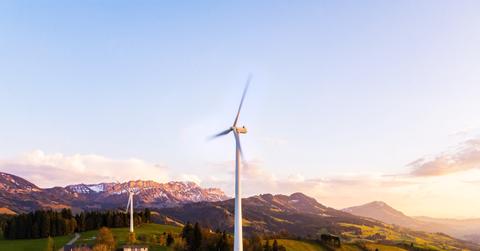Germany Sets New Record With 85% Renewable Energy Usage In One Day
Germany set a new record back on Sunday, April 30, with 85 percent of its energy coming from renewable sources like solar and wind generation. While it's an outlier, the country is still well ahead of the EU's goals of 20 percent standard usage by 2020.
Updated May 22 2019, 4:00 p.m. ET
Germany has become the standard of using sustainable energy. Over the last weekend of April, 85 percent of the energy the country generated came from renewable sources. Weather and the extended holiday weekend played a major role in the production, but it shows how close we can get to running solely on this kind of energy.
Renewable sources are any energy that’s generated by wind, water, solar, wood, and biomass. That 85 percent obtained on Sunday, April 30th, inside Germany set a new record for the country. Many factors made this achievable. May Day is a public holiday celebrated with many business and services closed. Most of the power stations ran by coal was shut down on Sunday as a mixture of sunny and windy weather would be able to generate lots of electricity by itself.
Agora Energiewende, which translates to the Agora Energy Transition or Energy Revolution, tweeted out statistics throughout the record-setting day. As expected, solar energy had a significant boost in the middle of the day. Wind tended to increase as the sun began to set, and offshore wind finally picked up in the late hours.
Reaching this level of generation isn’t normal, nor will it be at the moment. Germany reached a 40 percent level throughout the month of March according to Digital Trends. The United States falls far behind in comparison. Based on recent numbers by Renewable Energy World, the US generated 1.69 percent of its energy from renewable sources in the first half of 2016. That’s below the European Union’s goal of reaching 20 percent as a standard by 2020.
Based on that figure, Germany is soaring above that goal three years early. Other goals the country has is phasing out traditional power stations by 2022. Patrick Graichen, who’s part of the initiative at Agora, believes that days similar to April 30th would become the standard in the next 13 years.
To put things in perspective, up to 50 percent of the power came from two different kinds of coal earlier in the workweek. That was dumped to just a shade over 10 percent on Sunday. Gas usage never got much above three percent while it hovered closer to 10 percent throughout the week. Sundays are generally the best renewable days -- a week prior, renewable energy hit close to 70 percent with coal being limited to around 20 percent.
The United States has a lot of work to do if it wants to reach this level renewable energy usage. Not only is it better for the environment, it’s a lot cheaper. Zachary Shahan of Clean Technica explains that “the costs of utility-scale solar power and wind power fell 85 percent and 66 percent, respectively, in the past seven years.” Most people look at costs involved with this technology and believe it’s too expensive, but it’s more affordable than ever and that trend will continue.
We’re seeing a handful of companies like Apple and Tesla dive into sustainability. Any others that need a boost should look toward Germany for some incentive.
